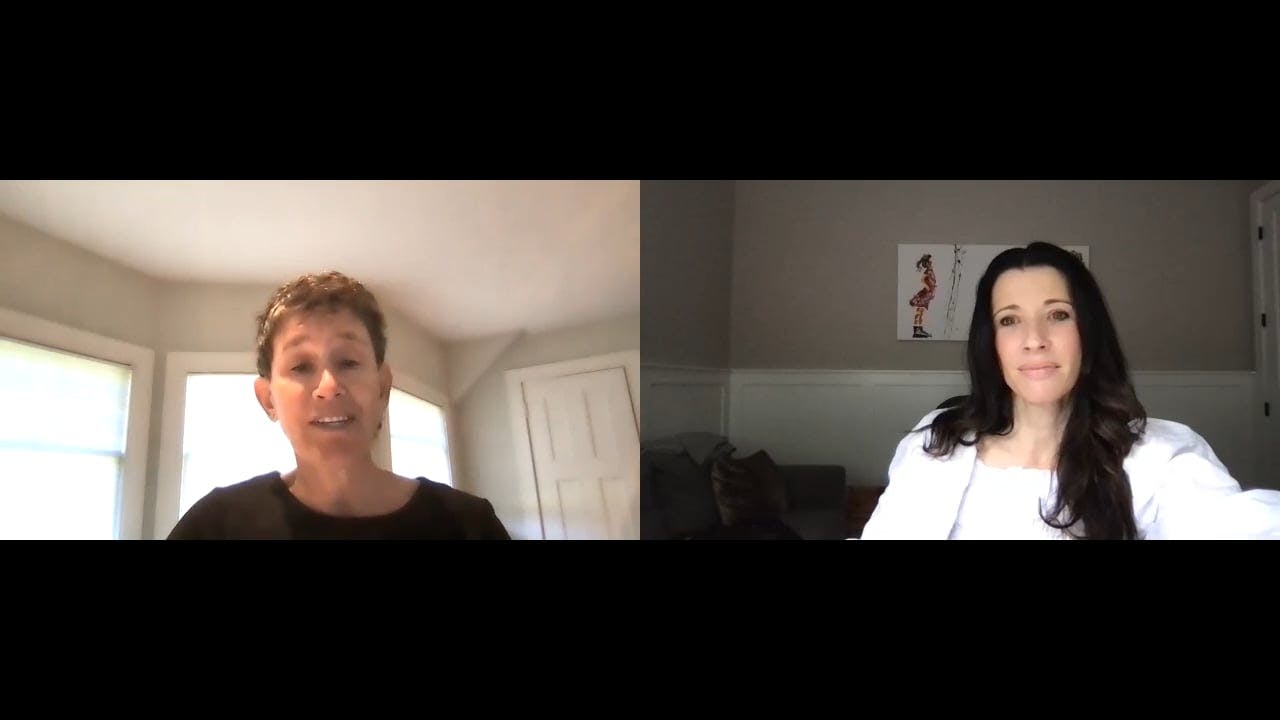
A new way to think about conflict and how we get out of it
60 min watch
As a woman in tech and a mother of seven who has re-invented her career several times, Maria Colacurcio is all too familiar with what she calls the “motherhood penalty”—the bias against women who are also mothers returning to the workforce; the way employers and employees view applicants and colleagues who are parents as being less committed to their work.
It’s one of many reasons she is so committed to helping companies achieve pay equity as an Emerson Collective Dial Fellow and CEO of Syndio, an HR analytics company that is accelerating progress towards pay equity with software that helps companies analyze gender, race, or ethnicity-based pay gaps and achieve and sustain fair pay. Syndio analyzes salaries, identifies discriminatory pay differences, and provides strategies to fix those disparities.
This tool is as important as ever, especially in light of the COVID-19 pandemic, which has upended the landscape of work in America, and disproportionately impacted employment for women, particularly women of color. More than 4.5 million fewer women are employed now than at the start of the pandemic, due to layoffs in female-dominated industries hit hardest by the virus, or because they were forced to leave work to care for children during school and daycare closures. Today, one year after the pandemic began, the women’s labor force participation rate is at its lowest point in more than 30 years.
Most of these women, research shows, are now likely to earn less in the future—with time and opportunity lost potentially adding up to a lifetime of lower wages. A recent study published by the National Bureau of Economic Research predicts a post-pandemic increase in the gender wage gap of five percentage points, and that it may take 20 years to return to pre-pandemic levels.
Colacurcio recently joined Emerson Collective Managing Director of Venture Investing, Fern Mandelbaum, for Fellows Friday to discuss growing pay inequity in the aftermath of the pandemic, with a hopeful counterpoint: we have the tools to achieve fair pay, and we can start using them right now.

FELLOWS FRIDAY SERIES: Maria Colacurcio talks about how the pandemic has exacerbated the persistent pay equity gaps for women and people of color, and how her company Syndio is helping companies eliminate pay disparity.
Let's take gender as an example—though this is very relevant to race and ethnicity as well. The pay gap would show you the average salary between men and women in a company. Think of it as the distribution or representation across the company for something like gender, race, or ethnicity.
Pay equity is like for like. When you hear the phrase, "Equal pay for equal work," that's pay equity. Most U.S. legislation focuses on pay equity.
To me, it's all about how we value the people that work for us. A company often says, "Our most valuable asset that we cherish, the thing we value the most, is our people." But then you look at how they're valuing their people in terms of pay, they're not even doing the baseline pay equity analysis to ensure they don't have disparities based on things like gender, race, ethnicity, or the intersectionality of any of those. We need to elevate this to the leadership level. This is a leadership issue, not a women's issue.
MARIA COLACURCIOThe World Economic Forum says it will take 200 years to close the pay gap, but we have innovation and technology that can close it now.
We're seeing the possibility that COVID erodes years of incremental progress that we've made working against pay inequity in companies. What happened when we all sheltered in place is this: retail workers, a sector we find more women and minorities in generally, were immediately out of work. Those who could work from home found themselves with no division between work and home. Childcare was gone.
Six months after the shutdown, we did a survey at Syndio to figure out how things were going. What we found was pretty remarkable. Men were leaning into work—they were actually working more hours. Women were scaling back, as they were disproportionately taking on household responsibilities – as we have generally – but also becoming the at-home teacher. Before COVID, the challenge of work-life balance was keeping work out of home; with COVID, the challenge, especially for women, was keeping home out of work. Which is almost impossible when childcare responsibilities fall disproportionately on one group.
I think I can offer a little bit more of a hopeful answer. The discussion immediately became the hot topic among boards and senior leaders: "What action can I take to combat gender and racial inequity in my company?" The question I always ask as a response is, "What is more tangible than measuring the degree to which a company is compensating employees for their contributions without regard to gender, race, and ethnicity?"
MARIA COLACURCIOWe have a tailwind right now and leadership can leverage it to accelerate change and combat gender and racial inequity in their companies.
Number one is starting pay. If you start low, stay low, you're going to have problems. When you hire a new person, it’s important to not only make that offer competitive to market rates, but also to look at the pay range that already exists in your company. If you're hiring disproportionately men at those competitive market rates but starting everyone else below market, you are going to consistently have pay equity issues. Versus, if you're consistently looking at starting salaries, and making sure you're avoiding inequity before you create it, you get away from this flow where each pay decision is a tiny bit biased. You eradicate that. You don't have this big pile-up of these teeny tiny little bits of bias with every single hire.
Number two is transparency. Forget having your law firm be the keeper of your company's equity. Add transparency. You commit as a company to sharing a top line summary results. That doesn't mean sharing everybody's salary – very few companies are comfortable going that far. But there's a spectrum of transparency. When you add transparency and you commit to sharing something, it’s a big step towards solving this problem.
The third is a little more complicated to solve, but we see it over and over again. That's this issue of systematic underleveling. An employee’s level remains fair game to ask about and open to negotiation, but it also dictates salary. The result is you get this systematic underleveling for women, for minorities, for underrepresented groups, and that causes a continuation of pay equity issues.
No, it is a global issue. It's not worse in the U.S. It's worse where compensation is more subject to discretion and negotiation. The U.S.. has one differentiating element, and that's that groups can sue. Elsewhere they cannot. Unfortunately, the onus is really on the plaintiff. They have to realize they’re underpaid because of their gender, race, or ethnicity. The positive is that class action cases can drive change—but that still drives this more into the hands of legal.
I think it’s actually a really interesting question to ask, “Would more legislation help?” We’re not sure. More pay equity legislation could actually make the problem worse, because then you're just creating more rules and driving it more into the hands of lawyers, and leaders may think about pay equity more in terms of risk mitigation. But there are a lot of things that could be done to improve the legislation.
And at the end of the day what’s really going to help is some sort of legislation just purely about transparency. If you look at the UK’s pay gap law, any company with more than 100 employees has to report on their pay gap every year. I think even something that simple as table stakes in the U.S. would have enormous benefits, because it requires companies to go public with certain metrics and be accountable to their employees.
You have an issue. I can tell you right now you do. Own it. Run toward it. Do an analysis. Commit to ongoing analysis. Trust given is trust received and your women and your underrepresented groups in your company will reward you. They will reward you with their trust.